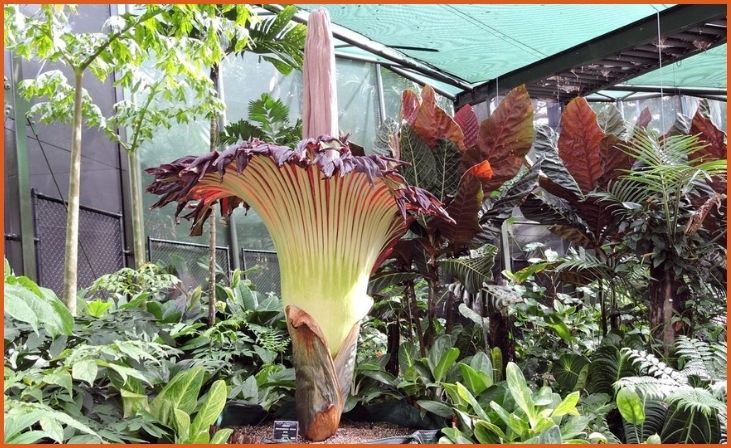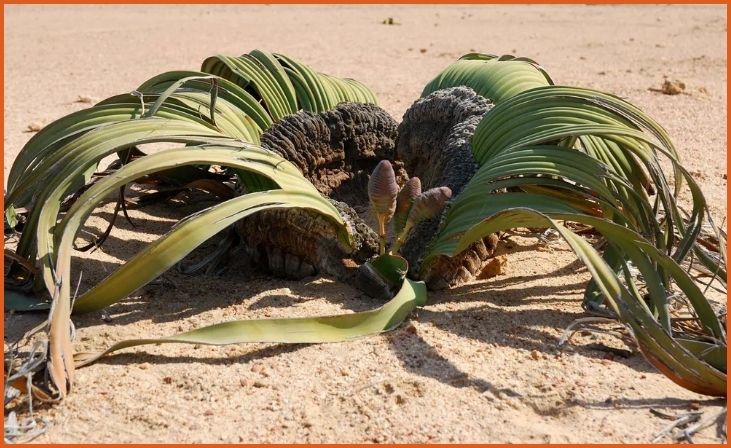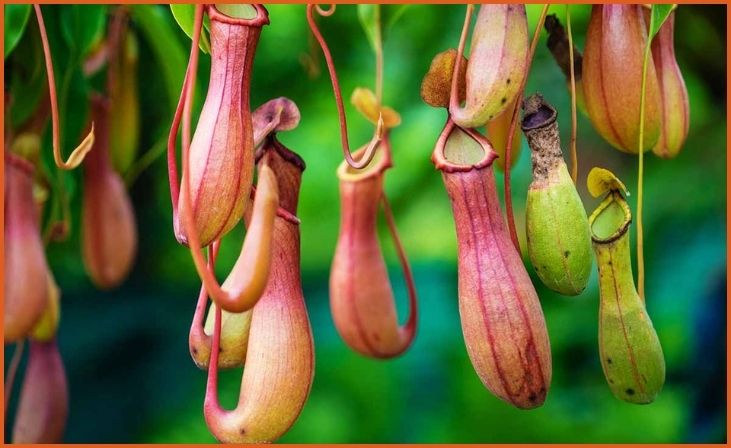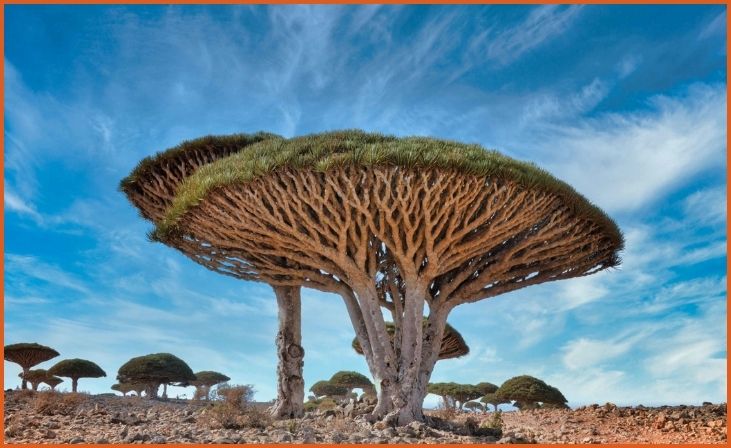The plant kingdom is full of remarkable species, and some stand out for their unique characteristics, rare beauty, and fascinating adaptations. Here are seven of the most exotic and extraordinary plants from around the world, each with its own distinct appeal:
Corpse Flower (Amorphophallus titanum)

The Corpse Flower, also known as Titan Arum, is renowned for its enormous size and the foul odor it emits during blooming, which resembles rotting flesh. Native to the rainforests of Sumatra, Indonesia, this rare plant can grow up to 10 feet tall and blooms only infrequently. The putrid smell serves a purpose—it attracts carrion beetles and flies for pollination, making this plant a marvel of both size and strategy in the natural world.
Welwitschia (Welwitschia mirabilis)

Welwitschia is a true survivor, found in the harsh deserts of Namibia and Angola. This ancient plant is often referred to as a “living fossil” due to its remarkable lifespan, which can exceed 1,000 years. What makes Welwitschia particularly unique is its growth habit—it has only two leaves that continue to grow throughout its life. Despite the challenging environment, it manages to thrive, showcasing its incredible resilience.
Baobab (Adansonia spp.)

The Baobab, often called the “Tree of Life,” is known for its massive, bulbous trunk, which can store thousands of liters of water to help the tree survive in arid conditions. These iconic trees are native to Africa, Madagascar, and parts of Australia, and can live for over a millennium. Beyond their impressive longevity and size, Baobabs are integral to their ecosystems, providing food, shelter, and water for a variety of species.
Rafflesia arnoldii

Rafflesia arnoldii is famous for producing the world’s largest single flower, which can grow up to 3 feet in diameter. Native to the rainforests of Borneo and Sumatra, this parasitic plant is unusual in that it lacks leaves, stems, and roots, relying entirely on its host plant for nutrients. The flower emits a strong odor of decaying flesh to attract pollinating insects, making it both a botanical wonder and a biological oddity.
Pitcher Plant (Nepenthes spp.)

Pitcher Plants are fascinating carnivorous plants with specialized leaves that form pitcher-shaped traps to capture and digest insects. These plants are native to tropical regions like Southeast Asia, Madagascar, and Australia, where they thrive in nutrient-poor soils by supplementing their diet with the nutrients from their prey. The intricate design of the pitchers and their ability to lure and trap insects make these plants both beautiful and deadly.
Sensitive Plant (Mimosa pudica)

The Sensitive Plant is known for its rapid movement in response to touch, making it one of the most interactive plants in the world. Native to South America, this plant has compound leaves that fold inward and droop when disturbed, a defense mechanism designed to deter herbivores. The Sensitive Plant’s ability to react to touch and environmental changes has fascinated botanists and plant lovers alike.
Dragon’s Blood Tree (Dracaena cinnabari)

The Dragon’s Blood Tree, native to the Socotra Archipelago in Yemen, is known for its striking umbrella-shaped canopy and the red resin it produces, called “dragon’s blood.” This resin has been used for centuries in dyes, medicines, and incense. The unique shape of the tree allows it to capture moisture from the air, helping it survive in the dry environment of Socotra, and its red resin adds an air of mystique to this already extraordinary plant.



